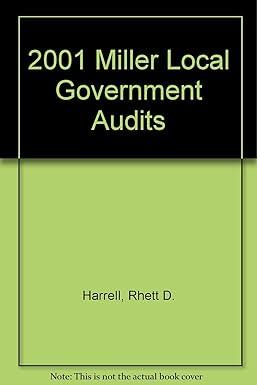Question
1. Hannah has been selling laptops for $300 each that had a cost of $252. By year end the net realizable value of the laptops
1. Hannah has been selling laptops for $300 each that had a cost of $252. By year end the net realizable value of the laptops had fallen to $237. At what value should the company's inventory of laptops be valued on December 31 of current year?
Select one:
a. $237
b. There is insufficient information to answer the question.
c. $300
d. $252
2.
Hannah has been selling laptops for $300 each that had a cost of $252. By year end the net realizable value of the laptops had fallen to $280. At what value should the company's inventory of laptops be valued on December 31 of current year?
Select one:
a. $300
b. $280
c. There is insufficient information to answer the question.
d. $252
3.
How might managers use LIFO to manipulate income upward?
Select one:
a. By purchasing more inventory at year end to make sure the ending inventory value is greater than the beginning inventory value.
b. By disclosing LIFO reserves in the financial statement footnotes.
c. By selling inventory items at higher prices when costs increase.
d. By drawing down on the LIFO reserve when additional income is needed to meet Wall Street expectations.
4.
LIFO Layer Liquidations and Net Income. The following information is taken from the annual report of The Claremont Corporation:
| (in millions) | Year 2 | Year 1 |
|---|---|---|
| Net income before tax | $375 | $29 |
The company uses the LIFO method to value its inventory. In addition, the footnotes to the company's annual report revealed that, during Year 2 and Year 1, inventory usage resulted in liquidations of LIFO inventory quantities, and the effect of these liquidations was to reduce the cost of goods sold by $28 million and $6 million in Year 2 and Year 1, respectively.
Calculate the company's net income before tax assuming that the LIFO inventory liquidations had not occurred.
| Year 2 | Year 1 | |
|---|---|---|
| Restated net income | Answer | Answer |
5.
Inventory Valuation and Earnings. Dominick Portet Wines Inc. began operations to import fine wines from Australia to the United States. Sales and purchase information is provided below.
| Year 1 | Year 2 | Year 3 | |||||||
|---|---|---|---|---|---|---|---|---|---|
| Units | $ | Units | $ | Units | $ | ||||
| Sales | 1,020 | 1,320 | 1,800 | ||||||
| Purchases | 1,500 | @ | $10 | 1,200 | @ | $8 | ? | @ | 15 |
| LIFO ending inventory | 480 | @ | $10 | 360 | @ | $10 | |||
Assume that Portet Wines uses the LIFO method of inventory valuation. The purchase amount for Year 3 has been left blank because Portet Wines has not yet decided the total number of units to purchase during the year. (Assume that all sales occur on the last day of the year, after all purchases for the year have been made. The company's year-end is December 31.)
Required
How many units should be purchased in Year 3 if the firm's objective is to maximize reported income for the year? Answer
Compute the cost of goods sold for Year 3 assuming the number of units computed in (1) is purchased. $Answer
How many units should be purchased in Year 3 if the firm's objective is to minimize income taxes for the year? Answer
Compute the cost of goods sold for Year 3 assuming the number of units computed in (3) is purchased. $Answer
Assume Portet Wines uses FIFO instead of LIFO and the company purchased just enough units to meet sales demand. What would the cost of goods sold be in Year 3? Assume that FIFO ending inventory is equal to 480 units at $10 in Year 1 and 360 units at $8 in Year 2. $Answer
PreviousSave AnswersNext
Step by Step Solution
There are 3 Steps involved in it
Step: 1

Get Instant Access to Expert-Tailored Solutions
See step-by-step solutions with expert insights and AI powered tools for academic success
Step: 2

Step: 3

Ace Your Homework with AI
Get the answers you need in no time with our AI-driven, step-by-step assistance
Get Started


